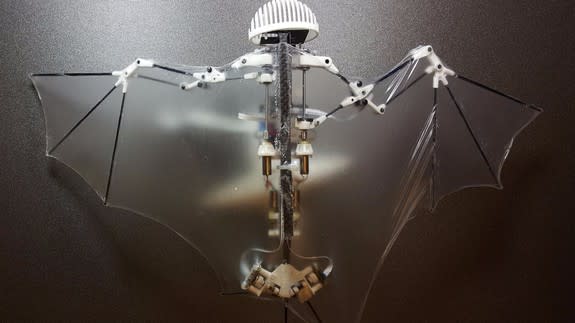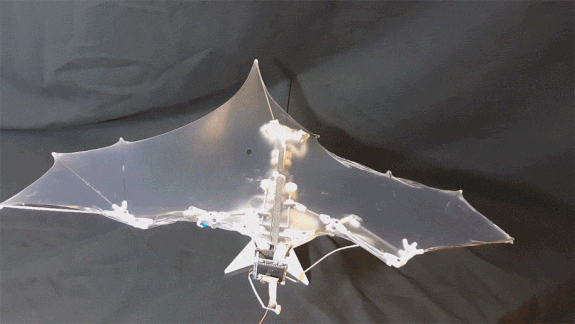This robot flies like a real bat and is not at all creepy

Drones have come a long way in a short amount of time. They now can deliver packages, help in search and rescue missions and will even slice off your finger if your happen to touch one of their spinning rotors. Since we almost certainly will live and work with flying robots in the future, scientists have been looking for a better and safer way to fly. A flying robot bat may provide the answer.
You’ve got to hand it to bats. Not only are they nature’s only flying mammal, they beat the feathers off most other flying animals when it comes to flight mechanics.
SEE ALSO: Talking to robots might make you feel better about your love life, new research shows
Their swoops, dives, sudden turns and ability to use bones and thin skin for flight, as opposed to feathers, have so entranced observers that scientists have studied bat flight mechanics for years.
Now three researchers at Caltech University, Alireza Ramezani, Soon-Jo Chung, and Seth Hutchinson, have built their own flying bat. It’s an autonomous robot called Bat Bot (B2) and it comes remarkably close to replicating the look and style of organic bat flight. Their work was published this week in the science journal Science Robotics.
While most flying robots use rigid wings and propellers to create lift, researchers sought to recreate a bat’s unique structure and complex wing flap.

Image: CalTech
What they ended up constructing is the 93-gram Bat Bot B2.
It’s a fully self-contained robot, with an on-board computer and sensors that help it fly and know its position and the relative positions of its elbows, hips and flapping joints. Instead of actuators at each joint, the team used a reduced set of wing joints, letting the thin (56 micrometers), silicon membrane that stretches over the wings and dorsal tail help control wing deformity and flight.
The result is something that, despite being almost white and semi-translucent, looks a lot like a real bat – especially when it flies. It can even perform a bat’s signature move of nose-diving for prey.
Solving the puzzle of bat flight is not just an entertaining exercise. Researchers contend that a robot that can fly with soft, flexible wings and that can turn, mid-air, on a dime, will be safer in an environment in which humans and robots must co-exist. It may also provide new opportunities for search and rescue in difficult environments where quadcopters, which tend to be more dangerous to humans, might fail.
